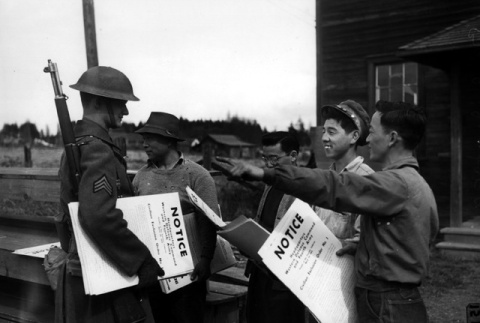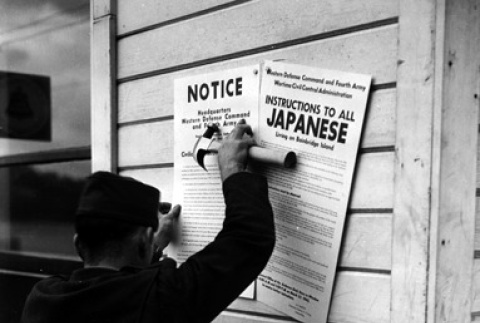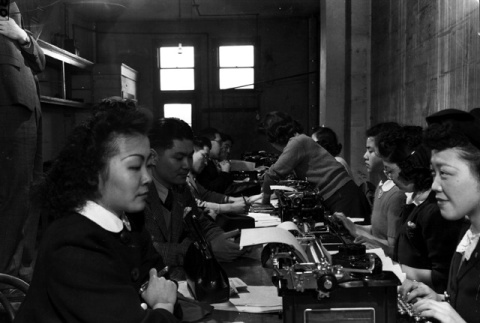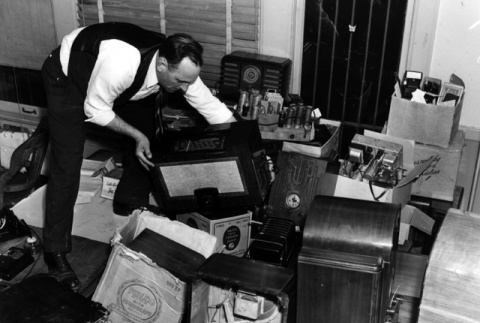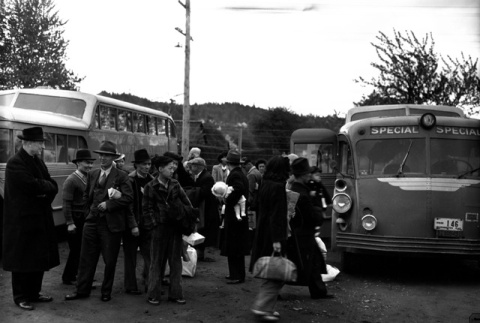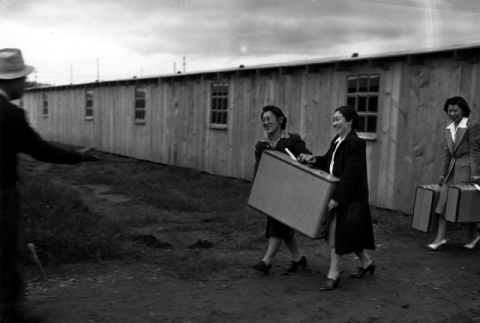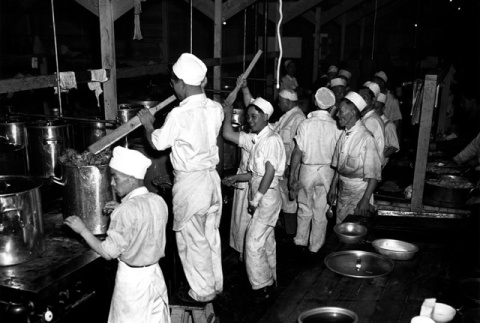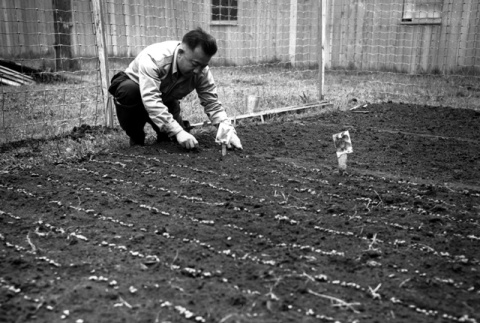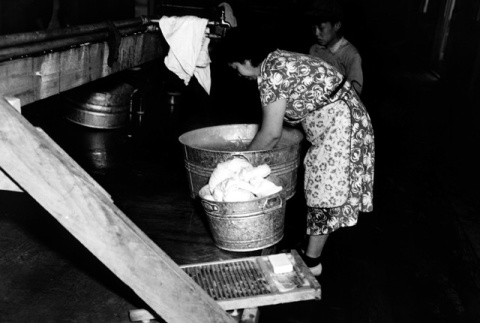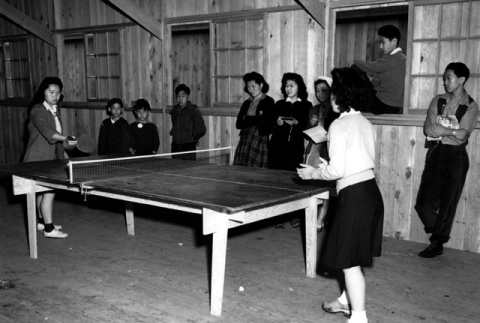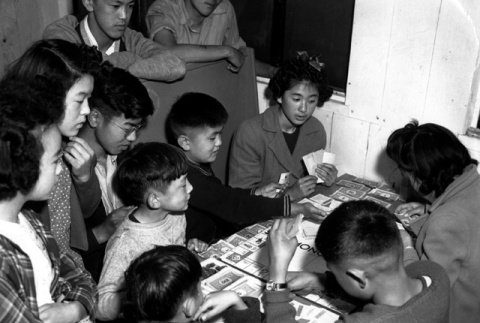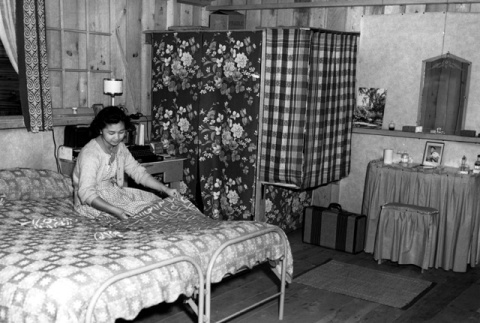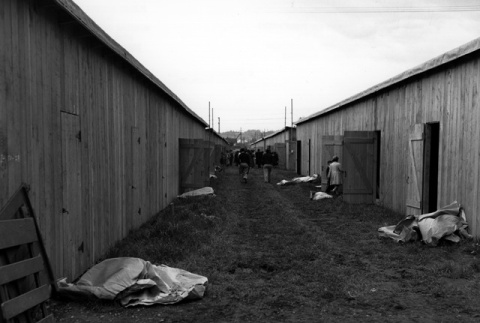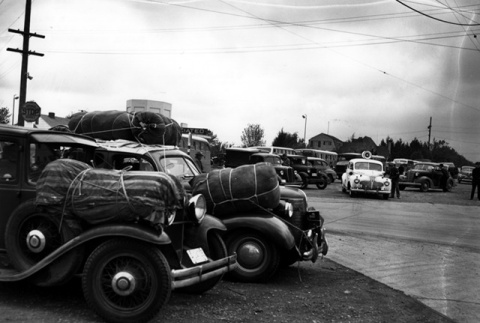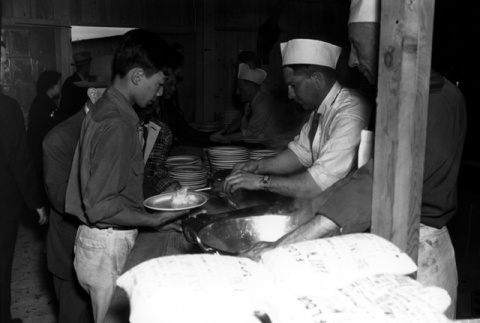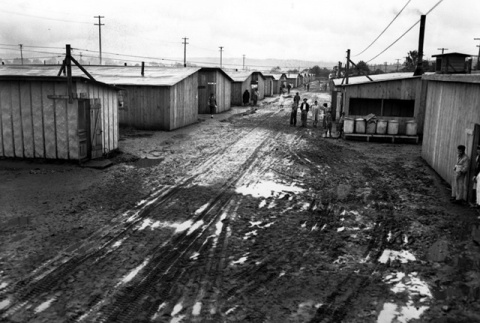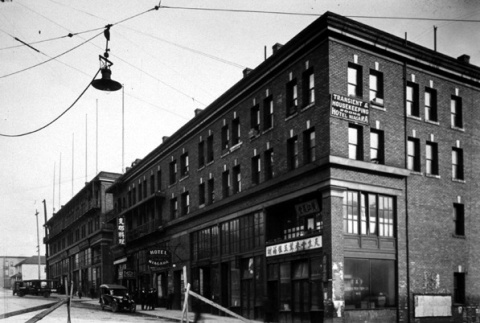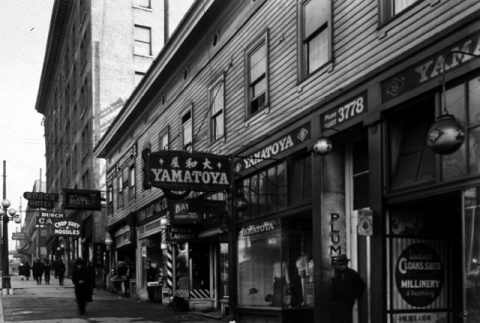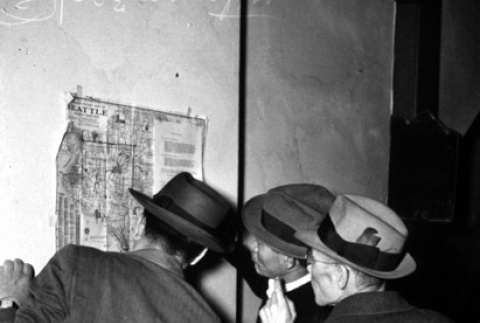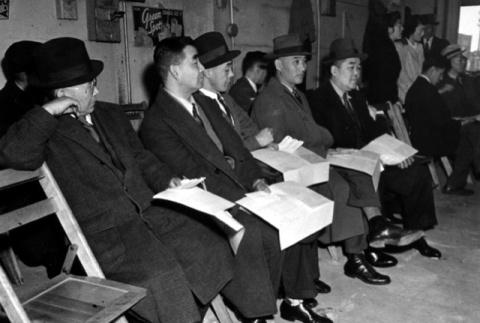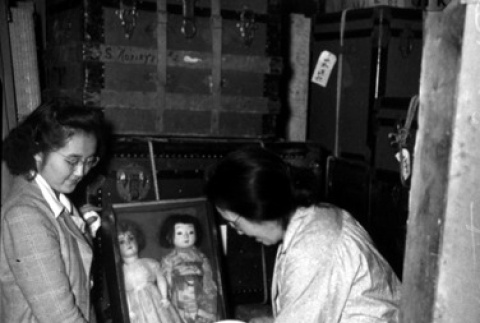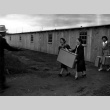Museum of History & Industry Collection ddr-densho-36
63 items
63 items
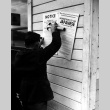
img
Soldiers posting exclusion orders (ddr-densho-36-28)
Original museum cataloging information: Special instructions. Army's edict. Soldier nailing up placards containing Civilian Exclusion Order No. 1 and special instructions to all Japanese residents of Bainbridge Island, telling them exactly how they are to comply with evacuation decree. Based on information from the museum, it appears the exclusion orders were posted on or near March …
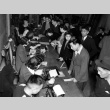
img
JACL mass removal registration (ddr-densho-36-29)
The Seattle chapter of the JACL conducted emergency "evacuation" registration on or about March 14, 1942.
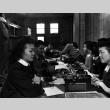
img
JACL mass removal registration (ddr-densho-36-30)
The Seattle chapter of the JACL conducted emergency "evacuation" registration on or about March 14, 1942.
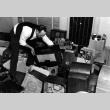
img
Man stacking confiscated radios (ddr-densho-36-31)
Shortly after the bombing of Pearl Harbor, Japanese Americans were ordered by government officials to surrender their cameras and radios, ostensibly to prevent their use in treasonable activities. It is important to note that there are no documented cases of Japanese Americans taking part in such activities.
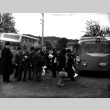
img
Arrival at the Puyallup Assembly Center (ddr-densho-36-32)
The Puyallup Assembly Center, which many camp inmates called "Camp Harmony," was on the site of the annual Western Washington Fair. The center was constructed in only seventeen days. Barracks were erected in converted livestock stalls near the parking lots and under the grandstand. Japanese Americans remained at the fairgrounds from April 28 to September 23,1942, …
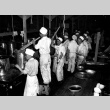
img
Japanese Americans cooking (ddr-densho-36-34)
The assembly center was composed of blocks, each with its own kitchen and dining area.

img
Japanese American gardening (ddr-densho-36-35)
Japanese Americans tried hard to make life at the assembly center bearable. Here, a camp inmate tends to a garden.
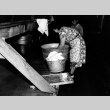
img
Japanese American washing clothes (ddr-densho-36-36)
The Puyallup Assembly Center was composed of a number of blocks. Each block had a communal washroom, such as the one shown here.
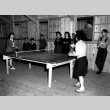
img
Group playing Ping-Pong (ddr-densho-36-37)
Japanese Americans made every effort to lead normal lives in the Puyallup Assembly Center. They cultivated gardens, engaged in different types of activities, and played games such as ping-pong.
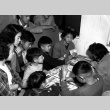
img
Group playing Monopoly (ddr-densho-36-38)
Japanese Americans did their best to lead normal lives in the Puyallup Assembly Center. They cultivated gardens, engaged in different types of activities, and played games such as Monopoly.

img
Barracks interior (ddr-densho-36-39)
Barracks apartments were small--approximately 8 by 10 feet or 15 by 20 feet--and offered little privacy. Japanese Americans tried hard to make the stark apartments homier. They made furniture, such as the vanity table in this redecorated barracks apartment, which was constructed by hand from scrap lumber.
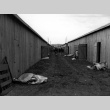
img
Japanese Americans walking between barracks (ddr-densho-36-40)
The Puyallup Assembly Center, also known as "Camp Harmony," was on the racetrack of the Puyallup fairgrounds. The center was open from April 28, 1942, through September 23, 1942. Most camp inmates were from Seattle, Washington. This is a view of the barracks that housed them.
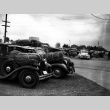
img
Baggage arrival at assembly center (ddr-densho-36-41)
The Puyallup Assembly Center, also known as "Camp Harmony," was located at the Puyallup fairgrounds. The center was open from April 28, 1942, through September 23, 1942. Most camp inmates were from Seattle, Washington.
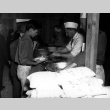
img
Japanese American receiving lunch (ddr-densho-36-42)
The assembly center was composed of blocks, each with its own kitchen and dining area.
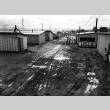
img
Puyallup Assembly Center (ddr-densho-36-43)
The Puyallup Assembly Center, also known as "Camp Harmony," was on the racetrack of the Puyallup fairgrounds. The center was open from April 28, 1942, through September 23, 1942. Most camp inmates came from Seattle, Washington. This is a view of the barracks that housed them.
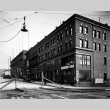
img
The Niagara Hotel (ddr-densho-36-44)
The Niagara Hotel, owned by K. Sawai, was located at 705-1/2 King Street in Seattle's Nihonmachi, Japantown. (Phone directory, 1925.)
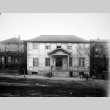
img
The Seattle Buddhist Church (ddr-densho-36-45)
The Seattle Buddhist Church was located at 1020 South Main Street in Seattle's Nihonmachi (Japantown) area.

img
Issei at the Public Market (ddr-densho-36-46)
These Issei farmers are at the Public Market, in Seattle, Washington. By the World War I, Japanese Americans occupied seventy percent of the market's stalls. Here, they are donating vegetables to needy families. The Public Market is also known as the Farmer's Market and Pike Place Market. Original museum description: Japanese farmers had sold fruits and …

img
Nihonmachi (Japantown) (ddr-densho-36-47)
South Jackson Street in Seattle's Nihonmachi, or Japantown. The museum's original identifying information dated this photo to circa 1910. Densho's later date, circa 1920s, is based on the clothing shown in the photograph.
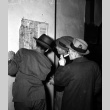
img
Three men looking at a mass removal map (ddr-densho-36-48)
Japanese Americans looking at a map of the mass removal districts. The map was posted at the Japanese American Citizens League office. Original Seattle Post-Intelligencer caption: "Marching orders; Japanese residents of Seattle studying a map in the office of the Japanese-American Citizen's League showing the areas from which all members of their race will be evacuated …
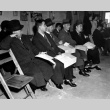
img
Japanese Americans registering for mass removal (ddr-densho-36-49)
These Japanese are being processed in preparation for exclusion from Seattle, Washington. The processing took place at a civil control station located at 2100 2nd Avenue. Original Seattle Post Intelligencer caption: "Waiting their turn--Members of Seattle's Japanese community in the course of being processed at the civil control station at 2100 2nd Ave. in preparation for …
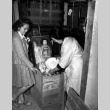
img
Packing items for the mass removal (ddr-densho-36-50)
This mother and daughter pack their belongings in preparation for mass removal.
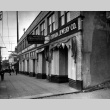
img
Japantown after mass removal (ddr-densho-36-51)
Japanese Americans were given little time to take care of their personal and business affairs once the exclusion orders were posted. Many businesses were either permanently closed or boarded-up for the duration of World War II. Shown here is 602 to 612 Jackson Street in Seattle's Nihonmachi, or Japantown.
